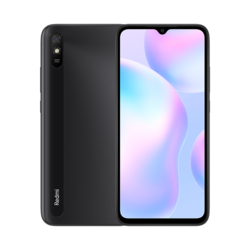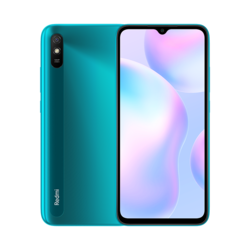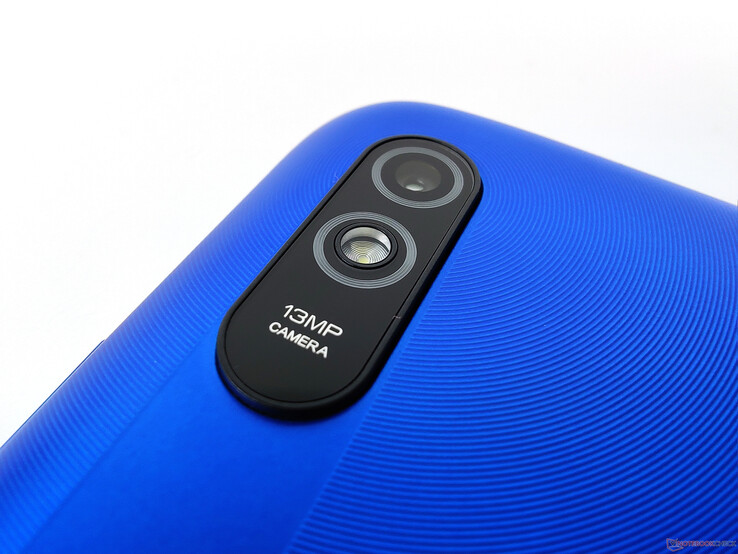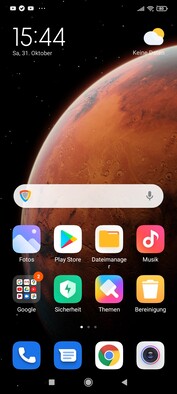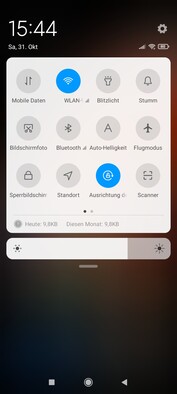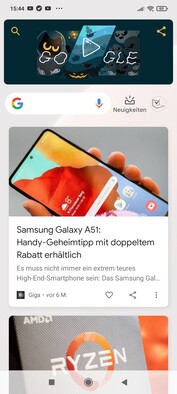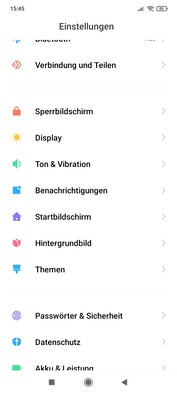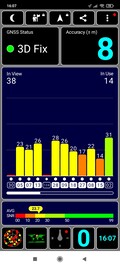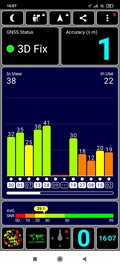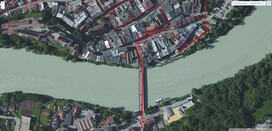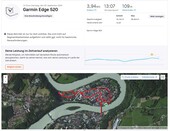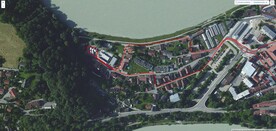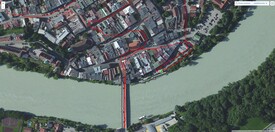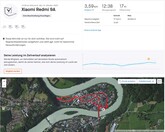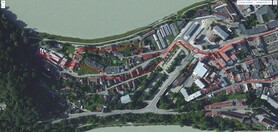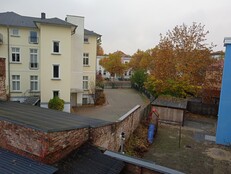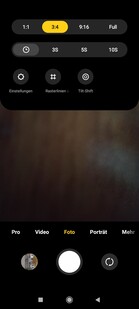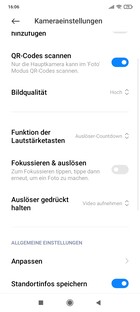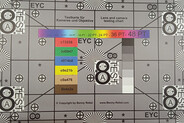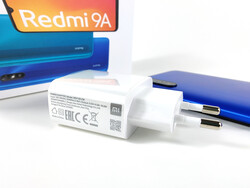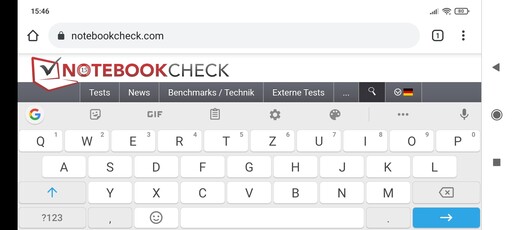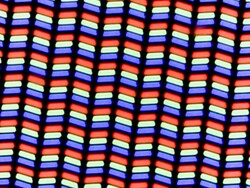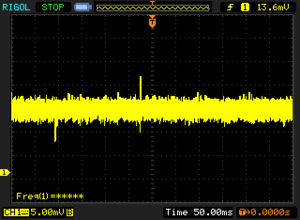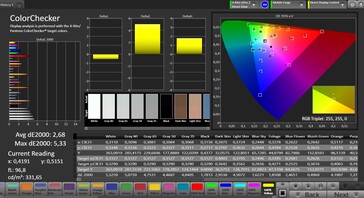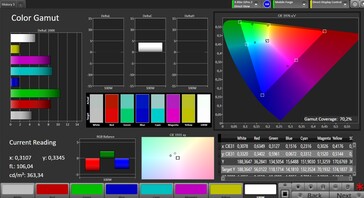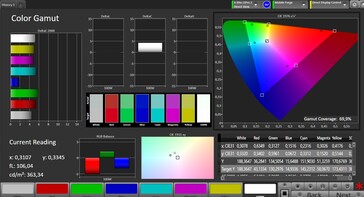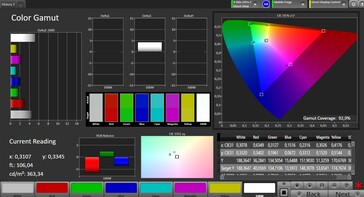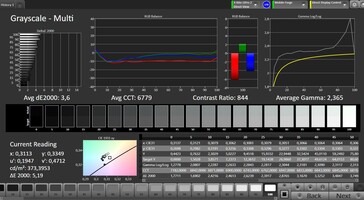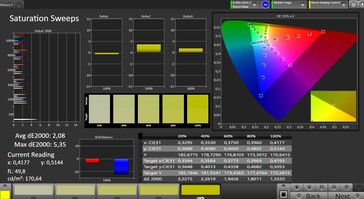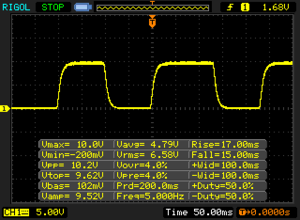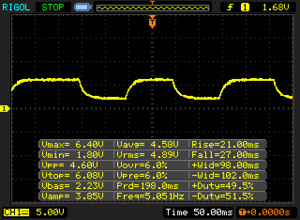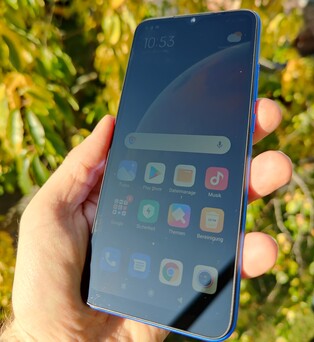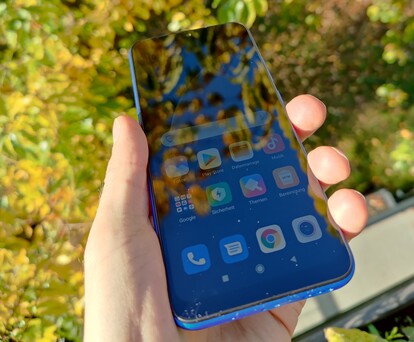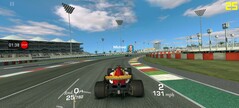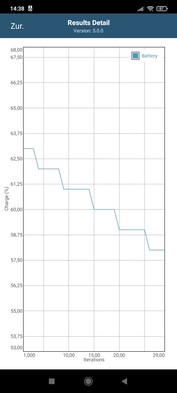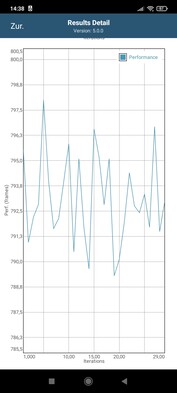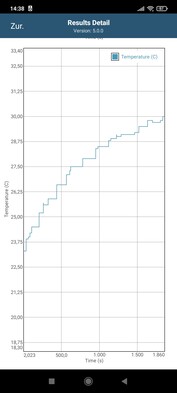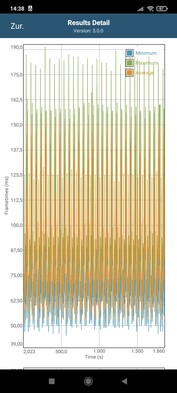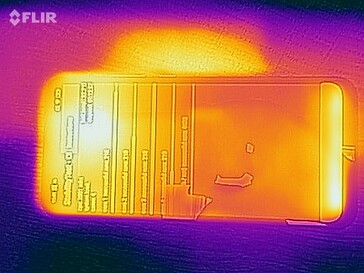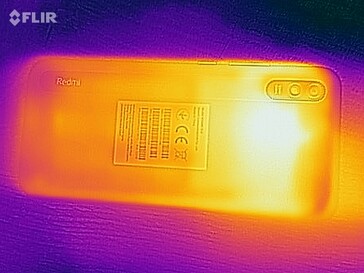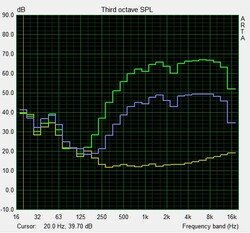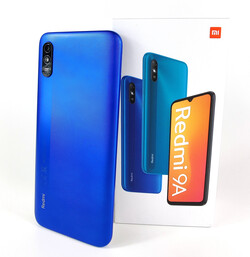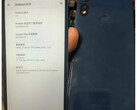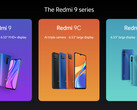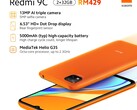Xiaomi Redmi 9A Smartphone Review: 99 Euro smartphone with long battery life and real dual SIM
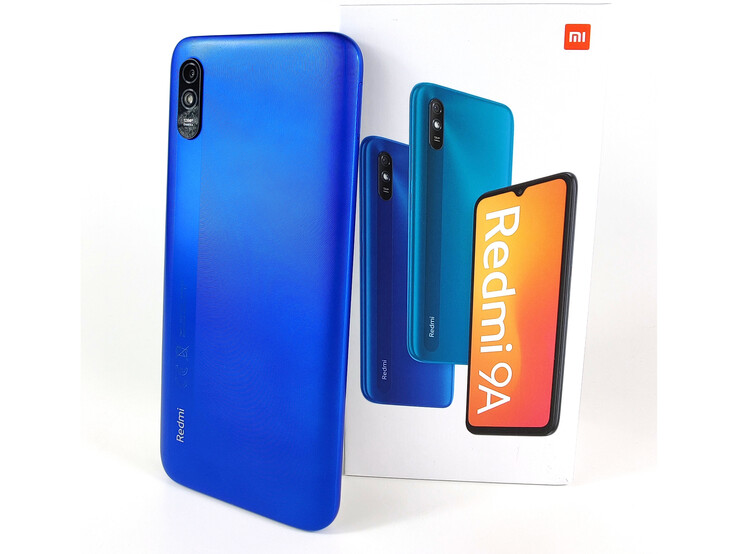
The Redmi 9A is a very affordable smartphone for real bargain hunters. However, in order to keep the price below 100 Euros (~$118), Xiaomi has cut some corners. Instead of the triple camera, as in the 9C sibling model, buyers will now only get a single camera, and you also have to make do without an NFC chip.
In addition, Xiaomi uses a fairly weak MediaTek processor, the new Helio G25, and only 2 GB of working memory. While customers in China have the choice between various models of up to 6 GB of RAM, users in this country (Germany) have to manage with the low amount of working memory.
On the other hand, the battery offers ample capacity at 5000 mAh. In combination with the 6.53-inch IPS display, which only offers a 720p resolution, a long battery life should be possible.
Comparison Devices
Rating | Date | Model | Weight | Drive | Size | Resolution | Price |
|---|---|---|---|---|---|---|---|
| 75.7 % v7 (old) | 11 / 2020 | Xiaomi Redmi 9A Helio G25, PowerVR GE8320 | 194 g | 32 GB eMMC Flash | 6.53" | 1600x720 | |
| 77.8 % v7 (old) | 09 / 2020 | Xiaomi Redmi 9 Helio G80, Mali-G52 MP2 | 198 g | 32 GB eMMC Flash | 6.53" | 2340x1080 | |
| 74.5 % v7 (old) | 10 / 2020 | Nokia 2.4 Helio P22 MT6762, PowerVR GE8320 | 195 g | 32 GB eMMC Flash | 6.50" | 1600x720 | |
| 75.9 % v7 (old) | 09 / 2020 | LG K51S Helio P35 MT6765, PowerVR GE8320 | 195 g | 64 GB eMMC Flash | 6.55" | 1600x720 | |
| 78.2 % v7 (old) | 06 / 2020 | Realme 6i Helio G80, Mali-G52 MP2 | 199 g | 128 GB eMMC Flash | 6.50" | 1600x720 | |
| 76.4 % v7 (old) | 08 / 2020 | Samsung Galaxy A21s Exynos 850, Mali-G52 MP1 | 192 g | 32 GB eMMC Flash | 6.50" | 1600x720 |
Case - Xiaomi smartphone with a display notch
The case of the Redmi 9A is mostly made from plastic. Still, our impression of the quality is absolutely satisfactory for this price range, even if you can minimally press in the back. The plastic surface offers a slight structure, which has a higher-quality feel than high-gloss visuals. The stability is also satisfactory, and we are unable to produce any creaking noises in our attempts of warping the case.
Despite the water drop notch, the bezels around the IPS panel are not particularly small, but they are still within acceptable limits for a low budget smartphone. Due to the fat chin at the bottom, the display-to-surface ratio is only about 81%.
The plastic keys for volume and power on the right side of the case also convinced us during the test. The pressure points are well defined and the keys sit tightly in their frames.
Equipment - Redmi 9A with a 3.5 mm audio port
The internal eMMC storage offers a capacity of 32 GB, with 23 GB of that still available to the user in the state of delivery. However, using an inserted microSDXC card, various file types (photos, music, etc.) can automatically be moved to the external storage.
The additional equipment of the Redmi 9A includes an FM radio and a 3.5-mm audio port. You can also connect peripheral devices such as USB sticks via OTG adapter to the Micro-USB port that supports the 2.0 standard. However, the wireless transfer of display contents to external monitors via Miracast did not work in our test.
Software - Xiaomi smartphone with MiUI 12
In the European version of the Xiaomi smartphone, video contents from streaming services cannot be viewed in HD quality, due to Widevine DRM Level 3.
The operating system is based on Android 10 with a security patch level of October 2020. The manufacturer overlays this with the in-house MiUI in the current version 12.0.8.
The MiUI surface offers a large amount of adjustments that don't have much in common with Vanilla Android. Besides the visual adjustments, the system software from the Chinese manufacturer offers numerous configuration options and is one of the fastest manufacturer surfaces in the Android segment.
Communication and GPS - Redmi 9A with dual SIM
In terms of the communication modules, as usual in this price range, Xiaomi does not use the new 5G standard but only an LTE connection in combination with Bluetooth Version 5.0. There is also no NFC chip for Near Field Communication. Instead, the Xiaomi smartphone offers space for two Nano SIM cards without having to remove the SD card.
While the Redmi 9A only supports access to 12 LTE bands, all the LTE frequencies relevant for Germany are covered, including LTE band 28.
In your WLAN at home, the low price of the 9A becomes apparent, since only the IEEE 802.11 b/g/n standards are supported. The transfer rates we measure between the Xiaomi smartphone and our Netgear Nighthawk AX12 reference router turn out correspondingly low. These low transfer rates are also relatively consistent.
| Networking | |
| iperf3 transmit AX12 | |
| Xiaomi Redmi 9 | |
| Samsung Galaxy A21s | |
| Realme 6i | |
| LG K51S | |
| Xiaomi Redmi 9A | |
| Nokia 2.4 | |
| iperf3 receive AX12 | |
| Samsung Galaxy A21s | |
| Xiaomi Redmi 9 | |
| LG K51S | |
| Xiaomi Redmi 9A | |
| Nokia 2.4 | |
| Realme 6i | |
In order to evaluate the locating accuracy of our test unit in practice, we record a route in parallel with the Garmin Edge 520 for comparison. The detailed route recording of the Redmi 9A GPS is not very accurate. Often the route is shown far away from the actual road, so the level of locating accuracy offered here might lead to some problems for navigation tasks in your car.
The location is determined using the GPS, Galileo, BeiDou, and GLONASS satellite systems. Even indoors, it is able to determine the location with an accuracy of about 8 meters (~26 ft) without any long delays.
Telephone Functions and Voice Quality - Xiaomi smartphone with VoLTE
The voice quality of the Redmi 9A ranges at a good level. The voice of our conversation partner is reproduced clearly, and our conversation partner also characterizes our voice as clearly understandable. The video telephony via Skype also works and is able to please with the built-in microphone, but the transferred video can be fairly grainy.
Despite its affordable price, the Redmi smartphone supports a dual VoLTE-HD function as well as WiFi calling.
Cameras - Redmi 9A with a single-camera solution
The back of the Redmi smartphone houses only a single camera that is equipped with an f/2.2 aperture. The recordings have a maximum resolution of 4160 x 3120 pixels in the 4:3 format. With sufficiently bright light conditions, solid pictures are possible with the 13-MP camera module. However, the image sharpness is often not very high. In low-light situations, the blurriness of the pictures increases noticeably, and the brightness is also not particularly good.
The front camera offers a 5-MP resolution and also has an f/2.2 aperture. The quality of the recordings are at a good level for an entry-level smartphone of this price range. It is suitable for selfie recordings and social media content. Colors appear vibrant, Bokeh effects are implemented well, and the sharpness is also okay.
Videos can be recorded at 1080p and 30 frames per second with the selfie camera as well as the camera in the back.
Image comparison
Choose a scene and navigate within the first image. One click changes the position on touchscreens. One click on the zoomed-in image opens the original in a new window. The first image shows the scaled photograph of the test device.
HauptkameraHauptkameraLow LightUnder controlled light conditions, the Redmi 9A shows relatively high color deviations with highly brightened colors. The test chart also confirms the focusing problems that already became obvious in our test pictures. Even under defined artificial light, the autofocus of the 13-MP camera is unable to focus on the object to reproduce it with an attractive sharpness.
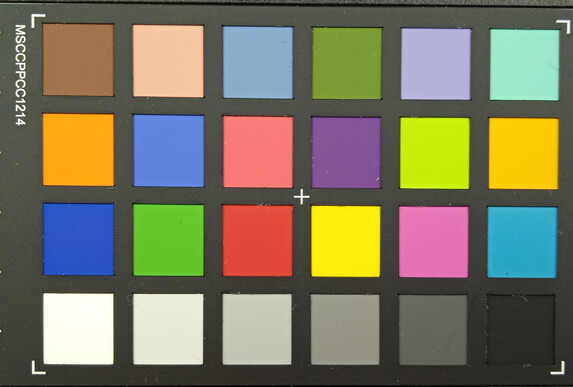
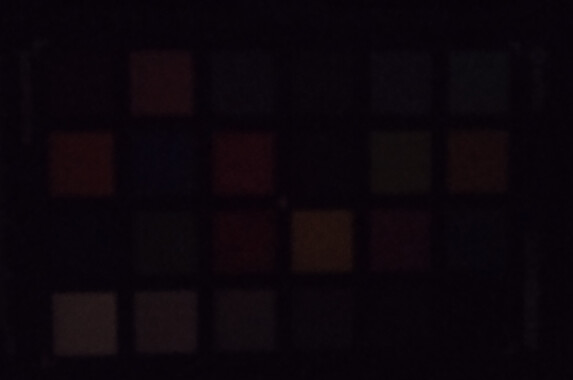
Accessories and Warranty - Xiaomi smartphone charges with 10 watts
In addition to a modular 10-watt charger, the box of the Redmi 9A contains a USB cable (Type-A to Micro USB), a headset, a SIM tool, and quick-start instructions.
The warranty period is 12 months (with the usual additional vendor warranty requirements in Germany being unaffected).
Input Devices and Operation - Redmi 9A without a fingerprint sensor
The capacitive multi-touchscreen responds quickly and reliably. In addition to the physical key, the entry-level smartphone can only be unlocked via face unlocking. In order to save costs, the Chinese manufacturer has left out biometric identification via fingerprint sensor.
In daylight, the 2D face-unlock function via the front camera recognizes the user with a low error rate, but the time to unlock the phone is relatively slow. With the light conditions worsening only slightly, the recognition rate becomes noticeably worse.
Display - Redmi 9A with an IPS panel
The LCD display of the Redmi 9A measures about 16.5 cm (6.53 in) in the diagonal and offers an HD+ resolution of 1600 x 720 pixels. This leads to a low pixel density of only 269 ppi and the contents are not displayed very sharp. However, from a normal viewing distance, the offered sharpness is acceptable.
In terms of brightness, the affordable Redmi smartphone is also not very convincing. In our measurements, the IPS panel only achieves a maximum brightness of 435 cd/m², which is a relatively low value, even though it is at the level of other entry-level smartphones.
| |||||||||||||||||||||||||
Brightness Distribution: 91 %
Center on Battery: 435 cd/m²
Contrast: 1318:1 (Black: 0.33 cd/m²)
ΔE ColorChecker Calman: 2.68 | ∀{0.5-29.43 Ø4.78}
ΔE Greyscale Calman: 3.6 | ∀{0.09-98 Ø5}
92.9% sRGB (Calman 2D)
Gamma: 2.365
CCT: 6779 K
| Xiaomi Redmi 9A IPS, 1600x720, 6.5" | Xiaomi Redmi 9 IPS LCD, 2340x1080, 6.5" | Nokia 2.4 IPS, 1600x720, 6.5" | LG K51S IPS, 1600x720, 6.6" | Realme 6i IPS, 1600x720, 6.5" | Samsung Galaxy A21s PLS, 1600x720, 6.5" | |
|---|---|---|---|---|---|---|
| Screen | -24% | -14% | -28% | -27% | -36% | |
| Brightness middle (cd/m²) | 435 | 476 9% | 445 2% | 407 -6% | 518 19% | 540 24% |
| Brightness (cd/m²) | 411 | 436 6% | 405 -1% | 393 -4% | 484 18% | 509 24% |
| Brightness Distribution (%) | 91 | 86 -5% | 85 -7% | 95 4% | 89 -2% | 91 0% |
| Black Level * (cd/m²) | 0.33 | 0.67 -103% | 0.26 21% | 0.53 -61% | 0.26 21% | 0.36 -9% |
| Contrast (:1) | 1318 | 710 -46% | 1712 30% | 768 -42% | 1992 51% | 1500 14% |
| Colorchecker dE 2000 * | 2.68 | 3.51 -31% | 4.73 -76% | 4.17 -56% | 5.8 -116% | 6.58 -146% |
| Colorchecker dE 2000 max. * | 5.33 | 9.38 -76% | 8.83 -66% | 8.28 -55% | 11 -106% | 11.55 -117% |
| Greyscale dE 2000 * | 3.6 | 1.5 58% | 4.2 -17% | 3.8 -6% | 7.3 -103% | 6.4 -78% |
| Gamma | 2.365 93% | 2.166 102% | 2.292 96% | 2.235 98% | 2.23 99% | 2.206 100% |
| CCT | 6779 96% | 6485 100% | 7378 88% | 7227 90% | 8037 81% | 8482 77% |
* ... smaller is better
Screen Flickering / PWM (Pulse-Width Modulation)
| Screen flickering / PWM not detected | |||
In comparison: 53 % of all tested devices do not use PWM to dim the display. If PWM was detected, an average of 8095 (minimum: 5 - maximum: 343500) Hz was measured. | |||
In combination with the good black value of 0.33 cd/m², the Redmi smartphone offers a reasonable contrast ratio of about 1300:1. In our measurement of the display brightness with evenly distributed bright and dark areas (APL 50) we determine a similar maximum brightness at 444 cd/m². The black value increases minimally to 0.35 cd/m² here, so that the contrast ratio remains almost the same at about 1300:1.
The analysis with a photo spectrometer and the CalMAN software shows deviations in the "Standard" profile that are very low for this price range in the color (2.7) and grayscale (3.6) display. At 6779 Kelvin, the measured color temperature is also only slightly above the ideal value of 6500 Kelvin.
Display Response Times
| ↔ Response Time Black to White | ||
|---|---|---|
| 32 ms ... rise ↗ and fall ↘ combined | ↗ 17 ms rise | |
| ↘ 15 ms fall | ||
| The screen shows slow response rates in our tests and will be unsatisfactory for gamers. In comparison, all tested devices range from 0.1 (minimum) to 240 (maximum) ms. » 85 % of all devices are better. This means that the measured response time is worse than the average of all tested devices (20.2 ms). | ||
| ↔ Response Time 50% Grey to 80% Grey | ||
| 48 ms ... rise ↗ and fall ↘ combined | ↗ 21 ms rise | |
| ↘ 27 ms fall | ||
| The screen shows slow response rates in our tests and will be unsatisfactory for gamers. In comparison, all tested devices range from 0.165 (minimum) to 636 (maximum) ms. » 82 % of all devices are better. This means that the measured response time is worse than the average of all tested devices (31.6 ms). | ||
Thanks to the IPS technology, the LCD display offers good viewing angle stability and the color reproduction remains stable even from steep viewing angles. While the panel of the Xiaomi smartphone does not produce any color inversions, the display becomes noticeably darker from steep viewing angles.
When using it outdoors, due to its low maximum brightness, the Redmi 9A is only able to convince to a limited extent. With the good contrast of the panel, the contents can be easily read in shady areas, even if there are some reflections. However, in direct sunlight, the display contents are hardly readable.
Performance - Redmi smartphone with a Helio G25
The Helio G25 used in the Redmi 9A is a MediaTek SoC with a weak performance. The affordable chip set is based exclusively on ARM Cortex A53 cores that run with a clock speed of up to 2.0 GHz in the G25. The Helio SoC offers eight processor cores that are divided into two clusters of four Cortex A53 cores with a clock speed of up to 2 GHz and four Cortex A53 cores of up to 1.5 GHz. With the advertised MediaTek HyperEngine, the system is supposed to allocate and move resources intelligently between the CPU, GPU, and working memory, which is meant to provide a more efficient performance during long gaming sessions.
Despite its gaming ambitions, the Helio G25 only integrates a PowerVR GE8320 with clock speeds of up to 680 MHz. This GPU also offers a weak performance and should place significantly below an ARM Mali-G52 MP2 in terms of the graphics power.
In everyday operation, the system does not always run smoothly and there are often some delays. Due to the slow eMMC storage, the load times are also significant. In the benchmarks, the Redmi 9A is the weakest smartphone in our comparison, but also the most affordable by far. However, neither in the CPU tests nor in the graphics-heavy benchmarks, the Helio G25 is able to reach the results of a Helio P22 in the Nokia 2.4. What is a bit surprising is that the G25 in the Redmi 9A even fares worse than a Helio A25, despite its higher clock speeds. Particularly the Mali-G52 MP2 of the Helio G80, which is inside the Redmi 9 sibling model, offers significantly more GPU performance.
| Geekbench 4.4 | |
| 64 Bit Single-Core Score (sort by value) | |
| Xiaomi Redmi 9A | |
| Realme 6i | |
| Average Mediatek Helio G25 (n=1) | |
| Average of class Smartphone (844 - 9776, n=55, last 2 years) | |
| 64 Bit Multi-Core Score (sort by value) | |
| Xiaomi Redmi 9A | |
| Realme 6i | |
| Average Mediatek Helio G25 (n=1) | |
| Average of class Smartphone (4134 - 34246, n=55, last 2 years) | |
| Compute RenderScript Score (sort by value) | |
| Xiaomi Redmi 9A | |
| Realme 6i | |
| Average Mediatek Helio G25 (n=1) | |
| Average of class Smartphone (5364 - 28121, n=42, last 2 years) | |
| PCMark for Android | |
| Work performance score (sort by value) | |
| Xiaomi Redmi 9A | |
| Xiaomi Redmi 9 | |
| Nokia 2.4 | |
| LG K51S | |
| Realme 6i | |
| Samsung Galaxy A21s | |
| Average Mediatek Helio G25 (6083 - 7009, n=3) | |
| Work 2.0 performance score (sort by value) | |
| Xiaomi Redmi 9A | |
| Xiaomi Redmi 9 | |
| Nokia 2.4 | |
| LG K51S | |
| Realme 6i | |
| Samsung Galaxy A21s | |
| Average Mediatek Helio G25 (4938 - 5296, n=6) | |
| GFXBench (DX / GLBenchmark) 2.7 | |
| T-Rex Onscreen (sort by value) | |
| Xiaomi Redmi 9A | |
| Realme 6i | |
| Samsung Galaxy A21s | |
| Average Mediatek Helio G25 (28 - 29, n=2) | |
| Average of class Smartphone (12 - 166, n=155, last 2 years) | |
| 1920x1080 T-Rex Offscreen (sort by value) | |
| Xiaomi Redmi 9A | |
| Realme 6i | |
| Samsung Galaxy A21s | |
| Average Mediatek Helio G25 (22 - 22, n=2) | |
| Average of class Smartphone (22 - 954, n=155, last 2 years) | |
| GFXBench 3.0 | |
| on screen Manhattan Onscreen OGL (sort by value) | |
| Xiaomi Redmi 9A | |
| Realme 6i | |
| Samsung Galaxy A21s | |
| Average Mediatek Helio G25 (19 - 19, n=2) | |
| Average of class Smartphone (18 - 166, n=157, last 2 years) | |
| 1920x1080 1080p Manhattan Offscreen (sort by value) | |
| Xiaomi Redmi 9A | |
| Realme 6i | |
| Samsung Galaxy A21s | |
| Average Mediatek Helio G25 (11 - 11, n=2) | |
| Average of class Smartphone (12 - 606, n=156, last 2 years) | |
| GFXBench 3.1 | |
| on screen Manhattan ES 3.1 Onscreen (sort by value) | |
| Xiaomi Redmi 9A | |
| Realme 6i | |
| Samsung Galaxy A21s | |
| Average Mediatek Helio G25 (13 - 13, n=2) | |
| Average of class Smartphone (11 - 166, n=157, last 2 years) | |
| 1920x1080 Manhattan ES 3.1 Offscreen (sort by value) | |
| Xiaomi Redmi 9A | |
| Realme 6i | |
| Samsung Galaxy A21s | |
| Average Mediatek Helio G25 (7.3 - 7.6, n=2) | |
| Average of class Smartphone (8.4 - 413, n=156, last 2 years) | |
| AnTuTu v8 - Total Score (sort by value) | |
| Xiaomi Redmi 9A | |
| Realme 6i | |
| Samsung Galaxy A21s | |
| Average Mediatek Helio G25 (84175 - 94609, n=2) | |
| Jetstream 2 - 2.0 Total Score | |
| Average of class Smartphone (23.8 - 387, n=149, last 2 years) | |
| Xiaomi Redmi 9 (Chrome 85) | |
| Realme 6i (Chrome 81) | |
| Samsung Galaxy A21s (Chrome 84) | |
| Average Mediatek Helio G25 (14 - 14.8, n=2) | |
| Xiaomi Redmi 9A (Chrome 86) | |
| JetStream 1.1 - Total Score | |
| Realme 6i (Chrome 81) | |
| Xiaomi Redmi 9 (Chrome 85) | |
| Samsung Galaxy A21s (Chrome 84) | |
| Xiaomi Redmi 9A (Chrome 86) | |
| Average Mediatek Helio G25 (n=1) | |
| Speedometer 2.0 - Result 2.0 | |
| Average of class Smartphone (15.2 - 643, n=122, last 2 years) | |
| Xiaomi Redmi 9 (Chrome 85) | |
| Realme 6i (Chrome 81) | |
| Samsung Galaxy A21s (Chome 84) | |
| Average Mediatek Helio G25 (12.5 - 12.8, n=2) | |
| Xiaomi Redmi 9A (Chrome 86) | |
| WebXPRT 3 - Overall | |
| Average of class Smartphone (38 - 380, n=31, last 2 years) | |
| Xiaomi Redmi 9 | |
| Realme 6i (Chrome 81) | |
| Samsung Galaxy A21s (Chrome 84) | |
| Xiaomi Redmi 9A (Chrome 86) | |
| Average Mediatek Helio G25 (n=1) | |
| Octane V2 - Total Score | |
| Average of class Smartphone (2228 - 121337, n=197, last 2 years) | |
| Realme 6i (Chrome 81) | |
| Xiaomi Redmi 9 (Chrome 85) | |
| Samsung Galaxy A21s (Chrome 84) | |
| Xiaomi Redmi 9A (Chrome 86) | |
| Average Mediatek Helio G25 (3965 - 3983, n=2) | |
| Mozilla Kraken 1.1 - Total | |
| Xiaomi Redmi 9A (Chrome 86) | |
| Average Mediatek Helio G25 (12437 - 13043, n=2) | |
| Samsung Galaxy A21s (Chrome 84) | |
| Xiaomi Redmi 9 (Chrome 85) | |
| Realme 6i (Chrome 81) | |
| Average of class Smartphone (257 - 28190, n=155, last 2 years) | |
* ... smaller is better
| Xiaomi Redmi 9A | Xiaomi Redmi 9 | Nokia 2.4 | LG K51S | Realme 6i | Samsung Galaxy A21s | Average 32 GB eMMC Flash | Average of class Smartphone | |
|---|---|---|---|---|---|---|---|---|
| AndroBench 3-5 | 17% | -11% | -6% | 95% | 43% | -19% | 831% | |
| Sequential Read 256KB (MB/s) | 258.9 | 289.9 12% | 245.7 -5% | 266.1 3% | 309.5 20% | 307 19% | 242 ? -7% | 2228 ? 761% |
| Sequential Write 256KB (MB/s) | 171.9 | 119.8 -30% | 119.5 -30% | 165.2 -4% | 256.4 49% | 104.3 -39% | 100.5 ? -42% | 1852 ? 977% |
| Random Read 4KB (MB/s) | 57.6 | 49.09 -15% | 46 -20% | 58.9 2% | 73.5 28% | 77.2 34% | 43.1 ? -25% | 296 ? 414% |
| Random Write 4KB (MB/s) | 26.7 | 60.7 127% | 22.5 -16% | 18.8 -30% | 150.9 465% | 89.5 235% | 22.3 ? -16% | 339 ? 1170% |
| Sequential Read 256KB SDCard (MB/s) | 80.2 ? | 84.4 ? 5% | 82.6 ? 3% | 79.6 ? -1% | 84.6 ? 5% | 80 ? 0% | 71.8 ? -10% | |
| Sequential Write 256KB SDCard (MB/s) | 62.1 ? | 65 ? 5% | 63 ? 1% | 59.3 ? -5% | 64.5 ? 4% | 66.4 ? 7% | 52.9 ? -15% |
Games - Redmi 9A not suitable for gaming
The PowerVR GE8320 integrated in the MediaTek SoC only allows stutter-free playing older 3D games from the Android Play Store such as "Dead Trigger 2." Current games such as the "Asphalt 9" racing game are not playable even in minimum graphics details. "PUBG Mobile" reaches about 25 fps at low graphics settings, but we also clearly notice some drops in the frame rate here. The less demanding "Real Racing 3" game also drops noticeably during the load phases. We determine the frame rate with the Gamebench app.
PUBG mobile
Dead Trigger 2
Real Racing 3
Emissions - Redmi smartphone without throttling
Temperature
During idle operation, the Redmi 9A hardly warms and we measure an even temperature distribution of about 25 °C (77 °F). On the other hand, the heat development under load conditions is uneven. While the top area develops temperatures of up to about 41 °C (106 °F), we measure significantly lower temperatures in the lower area.
However, what is more interesting is the heat development and cooling performance inside the Xiaomi smartphone. In order to evaluate the heat development under constant load, we use the battery test of the GFXBench app. The Manhattan 3.1 test shows that the frame rate hardly drops with increasing load. The fluctuations remain within a range of less than 1% of the total performance. This means that performance drops under load are very unlikely and the performance capabilities of the Helio G25 remain constant.
(±) The maximum temperature on the upper side is 40.6 °C / 105 F, compared to the average of 35.2 °C / 95 F, ranging from 21.9 to 247 °C for the class Smartphone.
(+) The bottom heats up to a maximum of 39.9 °C / 104 F, compared to the average of 34 °C / 93 F
(+) In idle usage, the average temperature for the upper side is 24.3 °C / 76 F, compared to the device average of 32.9 °C / 91 F.
Speaker
In our test, the mono speaker on the bottom of the Redmi 9A only produces a relatively low maximum volume of barely 77 dB(A). This makes the speaker less powerful than those of the competitors.
But compared to other entry-level smartphones, the sound quality is not significantly lower. Particularly the mids are reproduced fairly linear by the speaker. As expected, the sound spectrum does not contain any bass.
You don't have to live without an audio port in the Redmi smartphone. The audio output is average. Wireless earphones can be connected via Bluetooth 5.0. In terms of Bluetooth codecs, SBC, AAC, aptX, aptX HD, and LDAC are supported.
Xiaomi Redmi 9A audio analysis
(±) | speaker loudness is average but good (76.5 dB)
Bass 100 - 315 Hz
(-) | nearly no bass - on average 32.3% lower than median
(±) | linearity of bass is average (10.4% delta to prev. frequency)
Mids 400 - 2000 Hz
(+) | balanced mids - only 3.6% away from median
(+) | mids are linear (6.7% delta to prev. frequency)
Highs 2 - 16 kHz
(+) | balanced highs - only 4.6% away from median
(+) | highs are linear (3.5% delta to prev. frequency)
Overall 100 - 16.000 Hz
(±) | linearity of overall sound is average (26.1% difference to median)
Compared to same class
» 66% of all tested devices in this class were better, 6% similar, 28% worse
» The best had a delta of 11%, average was 35%, worst was 134%
Compared to all devices tested
» 80% of all tested devices were better, 4% similar, 16% worse
» The best had a delta of 4%, average was 24%, worst was 134%
Xiaomi Redmi 9 audio analysis
(+) | speakers can play relatively loud (83.7 dB)
Bass 100 - 315 Hz
(-) | nearly no bass - on average 69.2% lower than median
(+) | bass is linear (0% delta to prev. frequency)
Mids 400 - 2000 Hz
(-) | nearly no mids - on average 69.2% lower than median
(+) | mids are linear (0% delta to prev. frequency)
Highs 2 - 16 kHz
(-) | nearly no highs - on average 69.2% lower than median
(+) | highs are linear (0% delta to prev. frequency)
Overall 100 - 16.000 Hz
(-) | overall sound is not linear (119.4% difference to median)
Compared to same class
» 88% of all tested devices in this class were better, 8% similar, 3% worse
» The best had a delta of 11%, average was 35%, worst was 134%
Compared to all devices tested
» 96% of all tested devices were better, 3% similar, 1% worse
» The best had a delta of 4%, average was 24%, worst was 134%
Battery Life - Redmi 9A with a 5000-mAh battery
Power Consumption
The battery offers a capacity of 5000 mAh and can be recharged at up to 10 watts. A completely discharged battery can be recharged in almost 3 hours.
The Redmi 9A is not really efficient in terms of its power consumption.
| Off / Standby | |
| Idle | |
| Load |
|
Key:
min: | |
| Xiaomi Redmi 9A 5000 mAh | Xiaomi Redmi 9 5020 mAh | Realme 6i 5000 mAh | Samsung Galaxy A21s 5000 mAh | Average Mediatek Helio G25 | Average of class Smartphone | |
|---|---|---|---|---|---|---|
| Power Consumption | -10% | 28% | -15% | 9% | -5% | |
| Idle Minimum * (Watt) | 1.2 | 1.4 -17% | 0.37 69% | 1.5 -25% | 0.99 ? 17% | 0.842 ? 30% |
| Idle Average * (Watt) | 1.8 | 1.7 6% | 1.62 10% | 2.1 -17% | 1.75 ? 3% | 1.439 ? 20% |
| Idle Maximum * (Watt) | 1.9 | 2.1 -11% | 1.69 11% | 2.9 -53% | 1.893 ? -0% | 1.624 ? 15% |
| Load Average * (Watt) | 5.3 | 5.7 -8% | 3.61 32% | 4.6 13% | 4.64 ? 12% | 7.03 ? -33% |
| Load Maximum * (Watt) | 7.1 | 8.5 -20% | 5.9 17% | 6.6 7% | 6.3 ? 11% | 11.3 ? -59% |
* ... smaller is better
Battery Life
In our WLAN test with an adjusted display brightness of 150 cd/m², the entry-level smartphone lasts for a very long time. We measure a battery life of almost 22 hours, which should get even heavy users easily through the day. However, despite the deactivated WLAN module, the battery life turns out slightly lower in our endless video playing loop.
Under load, the battery life of the 6.53-inch smartphone is also very good. In our stress test, the Redmi 9A lasts for more than 5.5 hours.
| Xiaomi Redmi 9A 5000 mAh | Xiaomi Redmi 9 5020 mAh | Nokia 2.4 4500 mAh | LG K51S 4000 mAh | Realme 6i 5000 mAh | Samsung Galaxy A21s 5000 mAh | |
|---|---|---|---|---|---|---|
| Battery runtime | -20% | -37% | -39% | 0% | -22% | |
| Reader / Idle (h) | 48.4 | 39 -19% | 33.5 -31% | |||
| H.264 (h) | 21.1 | 19.5 -8% | 18.1 -14% | |||
| WiFi v1.3 (h) | 22 | 13.4 -39% | 13.8 -37% | 13.4 -39% | 22 0% | 15.7 -29% |
| Load (h) | 5.6 | 4.8 -14% | 4.8 -14% |
Pros
Cons
Verdict on the Redmi 9A - It could be done better, but hardly more affordable
As long as you judge the Redmi 9A as what it really is - a very affordable entry-level smartphone - the verdict turns out rather positive.
The affordable low-budget smartphone from Xiaomi is able to convince in our test through its successful workmanship, very long battery life, and good equipment. The IPS panel also offers solid viewing angles and a good color reproduction.
However, due to its price, you need to accept some significant compromises with the Redmi 9A. The performance capabilities are very limited. The combination of a 720p panel, 2GB of RAM, and Helio G25 SoC does not ensure a smooth system performance of the MiUI surface in everyday operation. The internal eMMC storage is also hardly able to convince with its speeds.
In our opinion, Xiaomi saved a few cents in the wrong place when it used a Micro-USB connection instead of USB Type-C. In the year 2020, this aged standard is not up-to-date anymore.
If they accept some compromises, buyers of the Redmi 9A receive a good low-budget smartphone that can hardly be beat for less than 100 Euros (~$118).
Comparatively, the Redmi 9A definitely delivers a lot of smartphone for very little money. However, buyers will also get a noticeably better overall package, such as a Redmi 9 or Redmi Note 9, for a limited extra amount.
Xiaomi Redmi 9A
- 11/08/2020 v7 (old)
Marcus Herbrich




